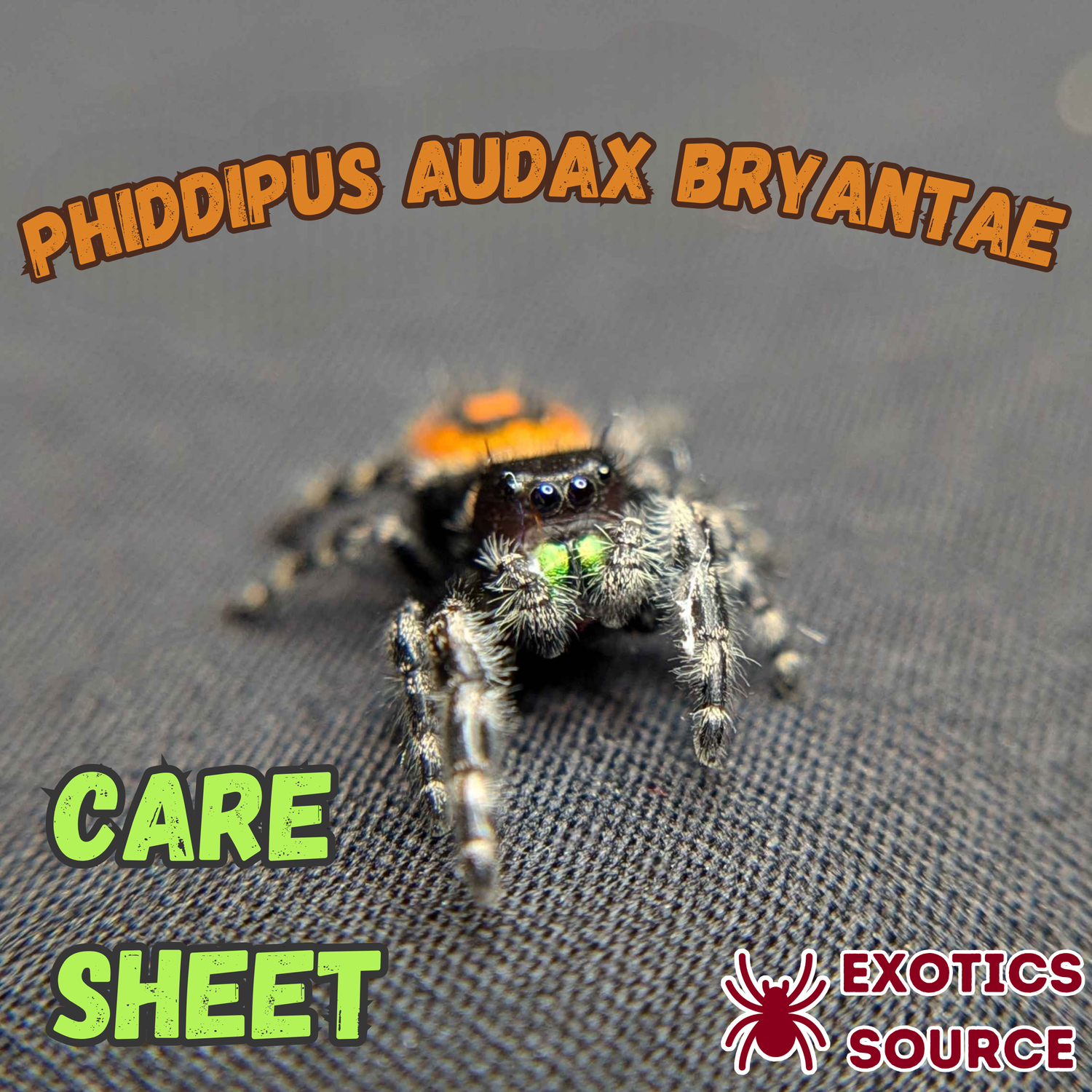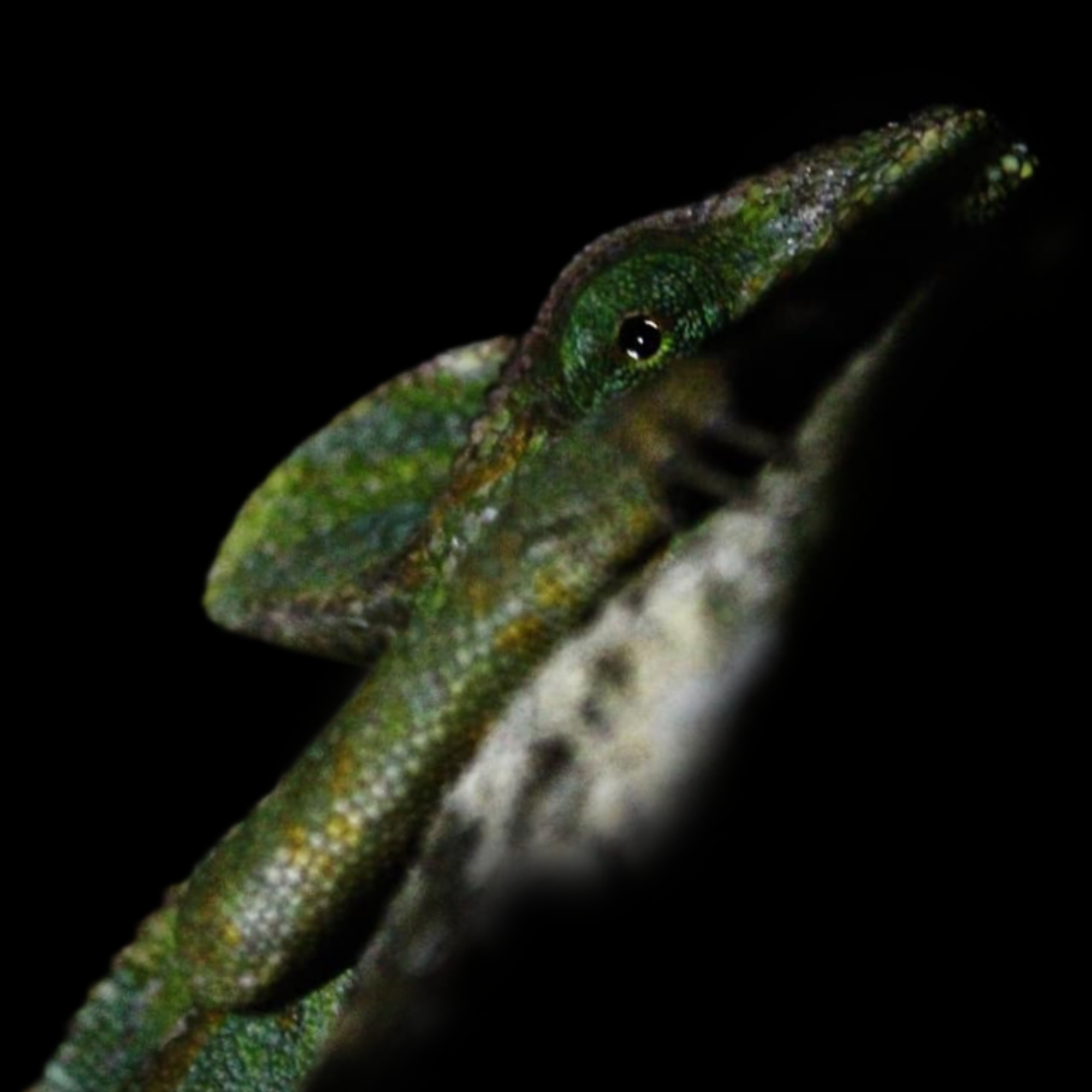Complete Care Guide for Phidippus audax bryantae (Bold Jumping Spider Subspecies)
Jumping spiders are some of the most fascinating arachnids in the pet trade, and Phidippus audax bryantae—a subspecies of the well-known Bold Jumping Spider—is no exception. These tiny hunters are curious, intelligent, and highly interactive, making them ideal pets for beginners and experienced keepers alike. If you’re looking to provide the best care for your P. audax bryantae, this care sheet covers everything you need to know!
🕷️ Species Overview
- Scientific Name: Phidippus audax bryantae
- Common Name: Audax Bryantae Jumping Spider, Bold Jumper (subspecies)
- Family: Salticidae (Jumping Spiders)
- Origin: Native to regions within North America, primarily found in warm, subtropical environments.
- Size: Approximately 0.4 - 0.6 inches (10-15mm) in body length.
- Lifespan: 2 - 3 years, with proper care.
- Temperament: Curious, bold, and interactive. They are not aggressive but can be skittish.
- Activity Level: Diurnal (active during the day), known for their fascinating hunting behaviors and unique “hopping” movements.
🌡️ Enclosure & Habitat Setup
🏠 Enclosure Requirements
A proper enclosure ensures your spider’s safety, comfort, and ability to exhibit natural behaviors.
- Size: Jumping spiders thrive in compact, vertically oriented enclosures. A container around 4” x 4” x 6” (10 x 10 x 15 cm) or larger is recommended.
- Ventilation: Good airflow is essential. Ensure the enclosure has fine mesh or drilled holes to prevent escapes.
- Material: Acrylic, glass, or mesh enclosures work well. Avoid enclosures that are too smooth, as jumping spiders need grip to climb.
- Lid Security: Ensure a tight-fitting lid to prevent escapes, as these spiders are excellent jumpers.
🌿 Decor & Hides
- Provide natural or artificial plants, cork bark, or small branches to create climbing opportunities and anchor points for their webbing.
- A small hide or ledge near the top of the enclosure can serve as a retreat for your spider.
- Use lightweight decorations that won’t harm the spider if they fall.
🏜️ Substrate
- While jumping spiders don’t require a deep substrate, a thin layer of eco earth (coconut fiber), sphagnum moss, or paper towels can help maintain humidity.
🌡️ Temperature & Humidity
Maintaining proper temperature and humidity levels is essential for the health of your P. audax bryantae.
- Temperature: 75-82°F (24-28°C) is ideal, but they can tolerate 68-85°F (20-29°C).
- Humidity: Maintain humidity levels around 50-70%. Avoid excessive moisture, as stagnant conditions can lead to mold or fungal growth.
- Misting: Lightly mist one side of the enclosure every 2-3 days to provide drinking water and maintain humidity. Avoid over-misting, as jumping spiders dislike excessive moisture.
🦗 Diet & Feeding
🍽️ What Do They Eat?
Jumping spiders are active hunters and require a diet of live, moving prey. A well-balanced diet includes:
- Flightless fruit flies (Drosophila hydei) – Best for spiderlings (slings) and juveniles.
- Pinhead crickets – A great staple for juveniles and adults.
- Mealworms & waxworms – Offered occasionally, but avoid overfeeding as they are high in fat.
- Houseflies & small roaches – Excellent choices for adult spiders.
🕷️ Feeding Schedule
- Spiderlings (slings): Feed every 1-2 days with small prey.
- Juveniles: Feed every 2-3 days with appropriately sized prey.
- Adults: Feed every 3-4 days with larger prey.
💧 Hydration
- Jumping spiders do not drink from water bowls. Instead, they obtain moisture from misted droplets.
- Mist one side of the enclosure lightly every few days to allow them to drink.
🕸️ Behavior & Handling
🎭 Temperament
- P. audax bryantae are bold and inquisitive. They recognize their owners and may even approach your hand when accustomed to handling.
- Unlike some other spider species, they actively observe their surroundings, often tilting their heads in curiosity.
✋ Handling
- While handling is possible, always do so gently and over a soft surface in case they jump.
- Allow them to climb onto your hand naturally rather than grabbing them.
- If they seem agitated, avoid handling and let them settle.
🏥 Common Health Issues & Prevention
1. Dehydration
Symptoms: Lethargy, shriveled abdomen, lack of movement.
Prevention: Maintain humidity and mist occasionally.
2. Improper Molting
Symptoms: Stuck in exoskeleton, missing limbs.
Prevention: Ensure proper humidity levels and do not disturb them during molting.
3. Overfeeding or Starvation
Symptoms: Bloated abdomen (overfeeding) or a flat, wrinkled abdomen (starvation).
Prevention: Follow a balanced feeding schedule.
4. Mite or Mold Infestation
Symptoms: White patches on the spider or excessive webbing buildup.
Prevention: Keep the enclosure clean and remove uneaten prey within 24 hours.
🕷️ Molting & Growth
Jumping spiders molt several times throughout their lives, shedding their exoskeleton as they grow.
Molting Signs:
- Reduced activity or complete hiding for several days.
- Refusal to eat (can last up to a week before molting).
- Dull coloration and slowed movements.
Post-Molt Care:
- Avoid disturbing them for at least 24-48 hours after molting.
- Do not feed immediately after a molt; wait until their exoskeleton hardens.
🏡 Breeding Phidippus audax bryantae
Breeding P. audax bryantae is an exciting but delicate process.
Mating Process:
- Introduce a well-fed female and a mature male in a neutral enclosure.
- Supervise carefully—if the female is not receptive, she may attack the male.
- After mating, the female will create an egg sac, which she guards.
- Spiderlings hatch within 2-4 weeks and should be separated upon reaching second instar.
🏁 Final Thoughts
Caring for a Phidippus audax bryantae is an incredibly rewarding experience. Their bold personalities, captivating hunting skills, and curious nature make them one of the best pet arachnids. With proper care, your P. audax bryantae will thrive and provide years of enjoyment!
📢 Are you ready to bring home one of these amazing spiders? Check out our available Phidippus audax bryantae and start your jumping spider journey today! 🕷️✨




Leave a comment
This site is protected by hCaptcha and the hCaptcha Privacy Policy and Terms of Service apply.